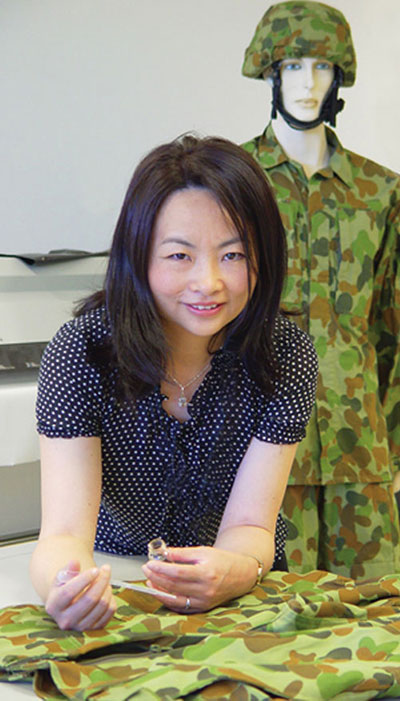Super water repellent materials

DST Group has made significant advances in the preparation of super water repellent materials.
The fabrication coating process DST has developed, in conjuction with a team at the Centre for Material and Fibre Innovation at Deakin University, offers great potential for Defence uniforms.
"The aim of this project is to develop lightweight, breathable and super water repellent uniform fabrics based on permanent nano-coating," DST researcher Jie Ding explains.
The nano-coated fabric, which can be used under body armour, will overcome integration issues with current wet-weather gear. Existing wet-weather gear is difficult to get over the top of bulky body armour. It also impedes access to kit.
"We aim to replace a waterproof poncho with a permanent nano-thin coating applied to everything the soldier carries, " says Ding.
This would be a welcome innovation for ADF personnel operating in the wet tropics.
"We expect such fabrics can provide the soldier with superior water repellance, good flexibility and air and moisture vapour permeability."
A super water repellent, or "superhydrophobic" surface can be generated by either roughening the surface or lowering the surface "free energy", or both. In recent years, researchers have made impressive efforts to prepare superhydrophobic surfaces for potential applications in a variety of areas.
Until now the tricky chemistry has meant that most techniques require a tedious and multiple-step procedure - impractical for fabrication of superhydrophobic surfaces on a large scale.
"We have reported a one-step coating method - by simply dipping fabric in the superhydrophobic solution or spraying the superhydrophobic solution on."
The novel syperhydrophobic solution is synthesised by mixing two solutions. DST's simple chemical process forms a transparent thin film of nanoparticles across the surface, also imparting the low free energy. It works effectively on different fabrics including polyester, wool and cotton.
Much of the chemical preparation was undertaken at Deakin University, while analysis and microscopic investigation was carried out at DST Melbourne.
The combined efforts have resulted in a high performance fabric that transfers water exclusively in one direction. Water proactively passes through this fabric from the superhydrophobic (water hating) to the hydrophilic (water loving) side. It is believed the fabric will find many military applications.
The development has been generating significant interest in the chemistry world.
Ding reports that transparent silica nanoparticle coatings have been trialled on the Australian Defence Force (ADF) Disruptive Pattern Camouflage Uniform (DCPU) fabric. The DCPU successfully became superhydrophobic, with no discernible change to vision and near infrared properties of the fabric.
DST continues to investigate properties of coated fabrics to look at breathability, durability and comfort.

